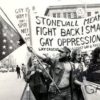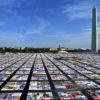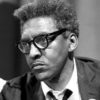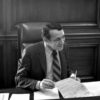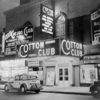Were the 1950s truly the “dark ages” for gay Americans as some historians have claimed?
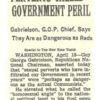
Students will analyze 6 -10 (or more depending on the class) primary and secondary sources. These sources will serve as historical evidence for students as they determine their response to the inquiry question. After students read and annotate each source, they will then collaborate and create a DBQ Poster. The DBQ poster process requires students 1) to sort the sources into 2 or more categories, 2) to consider all historically relevant content and 3) construct a group thesis that directly answers the inquiry question.

